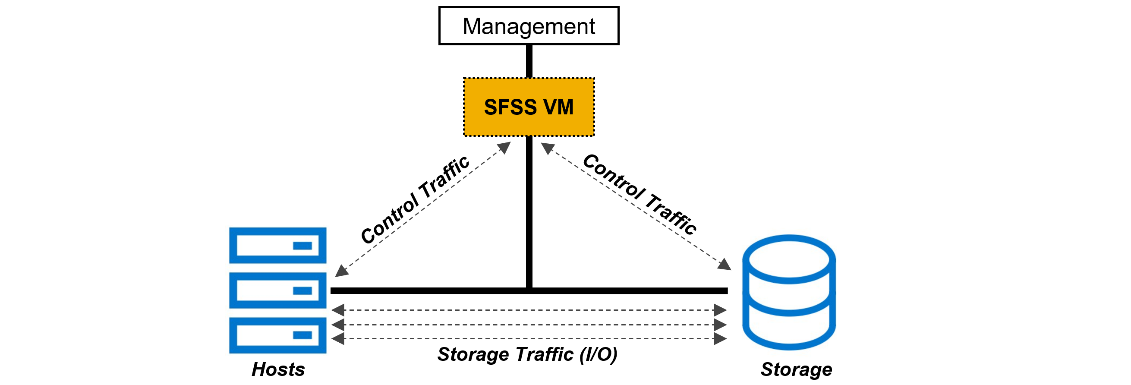

Dell PowerStore: Persistent Data Availability
Download PDFTue, 09 May 2023 23:21:16 -0000
|Read Time: 0 minutes
Summary
At Dell Technologies, storage solutions are architected for reliability, availability, and serviceability (RAS) as part of their design. Dell storage products also include redundant hardware components and intelligent software architected to deliver extreme performance and availability—simultaneously. This combination results in unparalleled operational durability, while also leveraging components in new ways that decrease the total cost of ownership of each system.
Data availability
Today’s business-critical application environments demand solutions which offer availability that is expressed in more than a simple number-of-nines of availability. While Dell PowerStore is designed for 99.9999% availability[1], there is more to availability than only the probability that a system will be operational during a defined period. There are also required features and automated processes that must be considered which enable non-disruptive operations so that the environment is persistent. These considerations provide the best opportunity for high availability and zero downtime.
All Dell storage solutions can incorporate onboard and interoperable data protection functionality such as remote replication and snapshots of data, used to deliver nonstop business continuity. Solutions can also include intelligent software which automates the processes which are needed to seamlessly operate an always-on environment.
Dell Technologies combines storage solutions architected for RAS, comprehensive remote replication technologies, local snapshot technologies, and intelligent software which helps automate data center operations. This combination results in solutions which go beyond just a bunch of nines to an always-on, persistent-data-availability environment.
Persistent solutions require that there be no single point of failure in the entire environment. This requirement spans the entire application infrastructure—from the hosts to the switches, to the storage, and to the data center itself. This means there must be complete redundancy end to end, and automation to detect and handle various fault conditions. For example, all the application components in a data center could be designed for the highest levels of availability. However, if a power-loss event occurs within the building or within the local region, the application could become unavailable unless redundancy is included at the data-center level.
High availability hardware resiliency
PowerStore appliances support clustering which allows for multi-appliance configurations, and each appliance has its own independent fault tolerance. Also, a single PowerStore appliance is a fully unified block and file environment packaged into a single 2U enclosure. Each PowerStore within the cluster consists of two nodes that make up a high availability (HA) pair. PowerStore appliances feature both fully redundant hardware and highly available software features. These features keep the system online if there are component failures, environmental failures, and even simultaneous failures of multiple components such as an internal fan and a disk drive. You can replace hardware using the redundant node architecture, keeping the system and data online and available.
PowerStore has a dual-node architecture where each node is identical, giving the ability to serve I/O in an active/active manner. Active/active capabilities increase hardware efficiency since there is no requirement for idle-standby hardware. In this way, PowerStore efficiently makes full use of all available resources through a highly redundant architecture. If SAN or IP network port connectivity is lost, the system uses redundant port connections, allowing hosts and clients to maintain access to the data. Also, dual-ported hard drives ensure that each node has seamless connectivity to the data.
PowerStore protects data writes using redundant shared write cache that is used by both nodes simultaneously. For PowerStore 1000 to 9200 appliances, any incoming I/O that is determined to be a write is stored in DRAM memory. Then, it is copied to the NVMe NVRAM drives so that each node in the appliance can access the data. In PowerStore 500 appliances, since NVRAM drives are not supported, write I/Os are mirrored to DRAM memory in each node. This ability enables the write cache to be preserved through hardware and software faults, and node reboots.
Also, if there is a power outage or temperature alarm on both nodes, the integrated battery backup unit (BBU) provides temporary power to the system, allowing the cache to be de-staged.
High availability software features
Dynamic Resiliency Engine (DRE) is a 100% software-based approach to redundancy that is more distributed, automated, and efficient than traditional RAID. It meets RAID 6 and RAID 5 parity requirements with superior resiliency and at a lower cost. This feature ensures enterprise-class availability by achieving faster drive-rebuild times with distributed sparing. DRE rebuilds smaller chunks of the drive simultaneously to multiple drives in the appliance. Intelligent allocation of unused user space is designed to replenish spare space for handling multiple drive failures automatically. Rebuild speeds are calculated intelligently when there is incoming I/O to ensure performance and availability during rebuild. DRE allows for flexible configurations that can lower TCO by expanding storage with a single drive at a time or by adding different drive sizes based on storage needs. Introduced with PowerStoreOS 2.0, the benefit of double-drive-failure tolerance further increased the number of concurrent failed drives that the system could withstand.
Active/active architecture allows for configuring paths across nodes for both iSCSI Ethernet and FC configurations using SCSI and NVMe protocols. For multipathing, you can use software such as Dell PowerPath on your hosts to use the full multipathing capabilities of PowerStore. Active/active architecture ensures host I/O requests use the active optimized path for best performance. In the rare event that the host loses the active optimized path, the host will switch over to the active non-optimized path where the I/O request will be processed locally by the PowerStore node.
Snapshots are supported on block and file resources (volumes, volume groups, virtual machines, file systems, and thin clones). Snapshots ensure the availability of critical data with near-immediate reverts to a previous, known-good recovery point, if there is an accidental deletion or malware outbreak. You can configure snapshot rules to support a wide range of recovery point objectives. Starting in PowerStoreOS 3.5, the secure snapshot setting can be enabled for snapshots on volumes and volume groups. Snapshot Rules can also be configured to create secure snapshots automatically. With secure snapshots enabled, the snapshots and parent resource are protected from accidental or malicious deletion and serve as a cost-effective line of defense against ransom attacks. If an unauthorized user gains access to a system, the attacker cannot delete secure snapshots and cause data loss.
Native replication is supported for file servers, block resources (volumes, volume groups, and thin clones), and VMs based on VMware vSphere Virtual Volumes (vVols). Native replication uses a TCP-based protocol to transfer data between two PowerStore clusters over Ethernet. You can apply replication rules on a policy basis to provide various recovery point objectives for your storage resources. For file and block resources, you can set up the policy in PowerStore Manager. vVol-based VMs are protected through VMware Storage Policies and VMware SRM (Site Recovery Manager).
Metro Volume is a replication feature that allows synchronously replicated active/active block volumes spanning across two PowerStore clusters. Bi-directional I/O synchronization provides active concurrent host I/O on participating systems. Integrated self-healing reprotects the Metro Volume after a failure scenario. PowerStore supports uniform and non-uniform host access in a vSphere Metro Storage Cluster configuration.
Native PowerProtect DD backup integration, available since PowerStoreOS 3.5, provides a simplified native backup solution for volumes and volume groups. By configuring remote backup sessions from PowerStore Manager, users can quickly backup resources, retrieve remote snapshots, and initiate instant access sessions. Instant access allows the host to view the contents of a remote snapshot without retrieving the data back to the PowerStore system -- instantly accessing deleted, corrupted, or modified data within the snapshot and copying it back to the host for quick recovery. Users can also discover and retrieve snapshot backups created on a different PowerStore cluster.
File-Level Retention (FLR) protects file data from deletion or modification until a specified retention date. PowerStore supports FLR-Enterprise (FLR-E) and FLR-Compliance (FLR-C). FLR-C has other restrictions and is designed for companies that need to comply with federal regulations (SEC rule 17a-4(f)).
Fail-Safe Networking (FSN), introduced in PowerStoreOS 3.5, provides a switch agnostic high availability solution for NAS interfaces. With FSN, users can eliminate single points of failure (ports, cables, switch, and so on) by linking ports together in an active/passive configuration. FSN is flexible because it can work alone or with user-defined Link Aggregations (LA).
Common Event Publishing Agent (CEPA) delivers SMB and NFS file and directory event notifications to a server, enabling third-party applications parse and control them. You can employ this ability for use cases such as detecting ransomware, managing user access, configuring quotas, and providing storage analytics. The event-notification solution consists of a combination of the PowerStore, Common Event Enabler (CEE) CEPA software, and a third-party application.
Clustering provides the ability to scale up and scale out appliances independent of one another while being managed from a single management interface. This flexible deployment model enables PowerStore to start small with a single appliance configuration, and grow into a larger cluster by simply adding appliances online. As part of clustering, we also support non-disruptive migrations of volumes within the cluster.
VMware integration is deep and rich with PowerStore. When administrators are using virtual machines on the PowerStore system, native VMware features such as vSphere High Availability (HA) are automatically enabled to ensure virtual machines remain available if there is an outage. Administrators can enable other features, such as VMware Fault Tolerance (FT), to guarantee the highest levels of availability. PowerStoreOS 3.0 introduces support for a VMware File System on PowerStore, optimized for VMware environments as NFS shared datastores.
Performance metrics in historical and real-time views enable monitoring for anomalies and troubleshooting performance issues. This allows administrators to monitor their environment and be proactive in preventing potential outages. Performance metrics are fully integrated into the PowerStore environment allowing for ease of use and customization.
Performance policies can be applied to block-level resources (volumes, volume groups, vVols, and thin clones) based on a high, medium, or low setting. Applying these policies to the storage objects help prioritize I/O requests to different hosts and applications. For example, a storage administrator may apply a high setting for a volume that is used by a database application such as Microsoft SQL Server. However, for other applications such as a test/dev vVol, the administrator may choose a low setting.
Non-disruptive upgrades to target PowerStoreOS software ensure the best possible resilience when it comes to PowerStore software and feature functionality. This is accomplished by upgrading one node at a time and ensuring all resources are running on the node not undergoing the upgrade. PowerStore also comes with anytime upgrade options which protect the customer’s investment if they want to upgrade their hardware model.
CloudIQ and SupportAssist configurations enable proactive awareness of system health and performance and provide a holistic view of multiple storage systems regardless of if they are on the same network. SupportAssist allows for direct connection to support with automated service requests for hardware and software faults, and remote connection to the array for faster troubleshooting and resolution.
Configuring a high availability environment
A best practice for a highly available storage environment is to define, implement, and regularly test a business-continuity, data-availability, and disaster-recovery plan. Be sure to fully understand the implications of global settings and their impact on system operation, and always record the original settings before making any configuration changes.
Besides resilient LAN and WAN infrastructures and a redundant environment (power and cooling), having out-of-band access to and remote power control of all nodes and switches is invaluable when administering clustered systems. In a worst-case scenario, if a cluster loses power, the write cache is battery protected and destaged to preserve any in-flight uncommitted writes to maintain write consistency.
Block guidance: Use redundant network switches at both edge and core connections to maximize path availability. Use native asynchronous block replication whenever there is a requirement for disaster recovery. Include snapshot rules in the protection policy for point in time recovery.
File guidance: For PowerStore T model appliances, file services can run on the first two ports of the 4-port card known as the system bond, or any other link aggregation configured in PowerStore Manager. To ensure these ports have optimal performance and fault tolerance, we recommend configuring multi-chassis link aggregation group (MC-LAG) on the network switches. For example, on Dell switches, an administrator should configure Virtual Link Trunking (VLT). Include snapshot rules in the protection policy for point in time recovery. Enable native asynchronous file replication which should be used whenever there is a requirement for disaster recovery. To meet compliance criteria for certain files, enable file-level retention which will protect files from modification and deletion during the retention period. To protect your data against ransomware attacks, configure CEPA for inline data protection.
Resiliency products: Using products such as PowerStore metro node or Dell VPLEX in front of PowerStore hardware enables the highest possible uptime for all block configurations. PowerStore metro node or Dell VPLEX as a storage-virtualization layer, replicates data across two PowerStore appliances in the same data center or across metro distance data centers to increase data availability. This extra layer of separation provides extra fault tolerance.
With VPLEX, PowerStore volumes are mirrored, always mounted read/write, and synchronized through VPLEX local/metro, providing continuous availability to hosts in the event one of the PowerStore systems becoming unavailable.
Measuring availability
To determine your storage system’s lifetime data availability, we measure the percentage of time the storage system is operational—or servicing user read/write operations. The data we collect is modeled using product redundancy features, parts replacement rates, mean time to restore a hardware failure, and defined service support levels. Because of the redundancy and concurrent maintenance philosophy built into every Dell storage product, most of the system issues and subsequent repairs and replacements will not affect your overall system availability.
In other words, we view data availability along with system durability from a total quality engineering perspective across all aspects of the array with your data environment. In doing so, Dell Technologies continuously brings you closer to 100% data availability.
By configuring your environment to maintain the highest availability, we also measure our ability to deliver on that promise. Through ongoing monitoring by Dell Technologies using SupportAssist and CloudIQ features, we can determine field reliability and availability which is an integral part of the total customer experience. Throughout this monitoring process, all unplanned-outage events are analyzed by engineering and service personnel to identify root-causes, and the findings are used towards continuous improvement of product, process, and personnel.
Dell Technologies can deliver on our promise of delivering you persistent data availability.
Other resources
See the following resources on the Dell Technologies Info Hub:
- Dell PowerStore: Introduction to the Platform
- Dell PowerStore: Clustering and High Availability
- Dell PowerStore: Virtualization Integration
- Dell PowerStore: File Capabilities
- Dell PowerStore: Replication Technologies
- Dell PowerStore: Metro Volume
- Dell PowerStore: Technical Primer
- Dell VPLEX Overview and General Best Practices
- Dell PowerStore: Snapshots and Thin Clones
[1] Based on the Dell Technologies specification for Dell PowerStore, April 2020. Actual system availability may vary.
Related Documents

PowerEdge MX and NVMe/TCP Storage
Fri, 28 Jul 2023 17:46:12 -0000
|Read Time: 0 minutes
Introduction
Dell PowerEdge MX was introduced in 2018, and since then Dell Technologies has continued to add new features and functionality to the platform. One such area is the support of NVMe over TCP (NVMe/TCP). As new applications such as Artificial Intelligence and Machine Learning (AI/ML) and the continuing consolidation of virtual workloads demand greater storage performance, NVMe/TCP brings performance improvements over protocols such as iSCSI at a lower price point than compatible Fibre Channel (FC) infrastructure (see Transport Performance Comparison). Incorporating this protocol into storage solution architecture brings new opportunities for higher performance using Ethernet and retiring FC infrastructure.
This tech note describes the architecture required to build PowerEdge MX solutions that use NVMe/TCP, simplifying connectivity to external storage arrays by reducing the physical network and streamlining protocols. It describes the value proposition and technology building blocks and provides high-level configuration examples using VMware.
Technology architecture
The four components of a Dell NVMe/TCP solution are a compute layer with the appropriate host network interface enabled for NVMe/TCP, high-performance 25 GbE or 100 GbE switching network, storage array supporting NVMe/TCP, and, finally, a management application to configure and control access. Dell offers several end-to-end PowerEdge MX base storage solutions that support NVMe/TCP on either 25 GbE or 100 GbE networking. The solutions include PowerEdge servers, PowerSwitch networking, and several Dell storage array products with Dell SmartFabric Storage Software for zoning management.
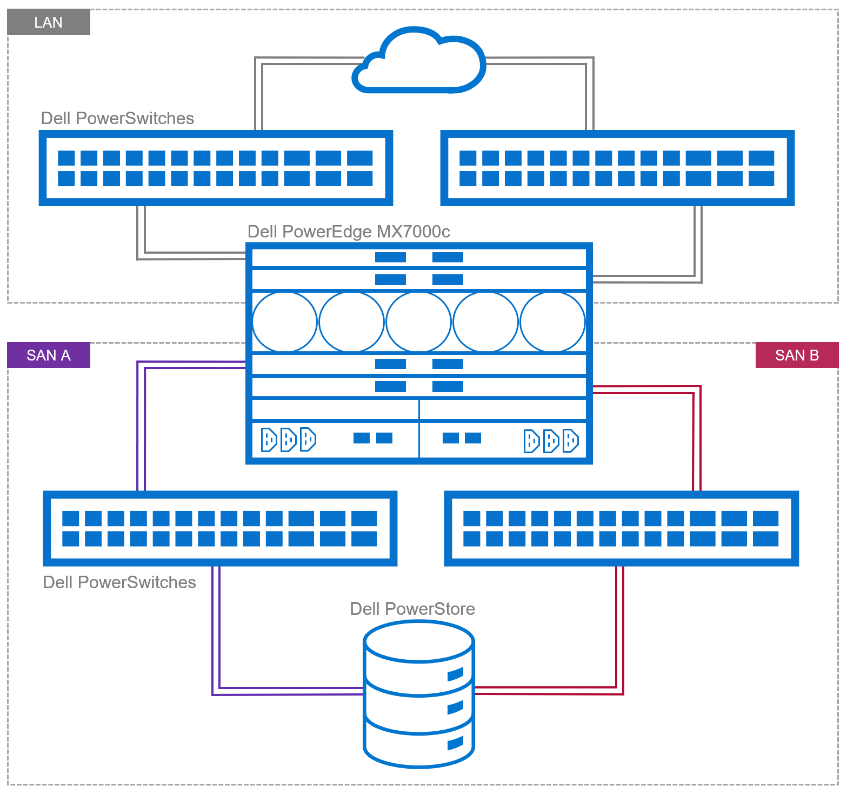
Figure 1. Example of NVMe/TPC SAN and LAN architecture
Dell continues to validate and expand the matrix of supported hardware and software. The document, NVMe/TCP Host/Storage Interoperability Simple Support Matrix, is available on E-Lab Navigator and updated on a regular basis. It includes details about tested configurations and supported storage arrays, such as PowerStore and PowerMax.
Table 1. Example of supported configurations extracted from NVMe/TCP Host/Storage Interoperability Simple Support Matrix
Server | NIC | MX Firmware/ | Storage Array | Boot From San | OS |
MX750c MX760c | Broadcom 57508 dual 100 GbE Mezz card | MX baseline 2.10.00 | PowerMax 2500/8500 OS 10.0.0 / 10.0.1 | No | VMware ESXi 8.0 |
MX760c
| Broadcom 57504 dual 25 GbE Mezz card | MX baseline 2.00.00 | PowerMax 2500/8500 OS 10.0.0 / 10.0.1 | No | VMware ESXi 8.0 |
MX750c MX760c | Broadcom 57508 dual 100 GbE Mezz card | MX baseline 2.10.00 | PowerStore 500T/1000T 3000T/7000T 9000T | No | VMware ESXi 8.0 |
MX760c | Broadcom 57504 dual 25 GbE Mezz card | MX baseline 2.00.00 | PowerStore 500T/1000T 3000T/7000T 9000T | No | VMware ESXi 8.0 |
These are the minimum supported versions. See the Dell support site for the latest approved version.
PowerEdge MX
The 100 GbE mezzanine card was added to the PowerEdge MX compute sled connectivity portfolio in April 2023. The PowerEdge MX offers a choice of both 25 GbE and 100 GbE at the compute sled, with a selection of various networking I/O modules.
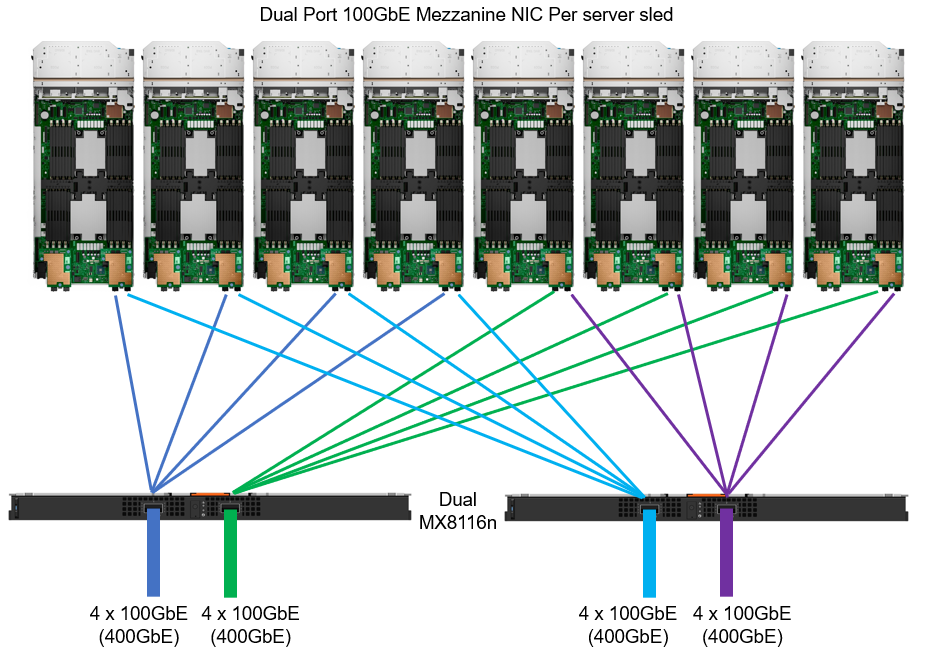
Figure 2. MX chassis 100 GbE architecture
IP switch fabric
NVMe/TCP traffic uses traditional TCP/IP protocols, meaning the network design can be quite flexible. Often, existing networks can be used. The best-practice topology dedicates switches and device ports for storage area network (SAN) traffic only. In Figure 1, local area network (LAN) traffic connects to a pair of switches northbound from Fabric A in the MX chassis. Fabric B connects to dedicated, air-gapped switches to reach the storage array.
For more details about NVMe/TCP networking, see the SmartFabric Storage Software Deployment Guide.
For 25 GbE connectivity, there are a number of options, starting with dual- or quad-port mezzanine cards, with a selection of pass-through or fabric expansion modules or full switches integrated into the PowerEdge MX chassis. For scalability, a pair of external top-of-rack (ToR) switches are implemented for interfacing with the storage array.
For 100 GbE end-to-end connectivity, the MX8116n Fabric Expander Module is a required chassis component for the PowerEdge MX platform. A Z9432F-ON ToR switch is then required for MX8116n connectivity. The Z9432F supports 32 ports x 400 GbE (or 64 ports x 200 GbE using breakouts or 128 ports x multiple interface speeds from 10 GbE to 400 GbE ports using breakouts). So how does the Z9432F-ON work in the MX 100 GbE solution? The 400 GbE ports on the MX8116n connect to ports on the PowerSwitch. The solution scales the network fabric to 14 chassis with 112 PowerEdge MX compute sleds. Each MX7000 chassis uses only 4 x 400 GbE cables, dramatically reducing and simplifying cabling (see Figure 2).
Storage
Taking Dell PowerFlex as an example, NVMe/TCP is supported in the following manner: PowerFlex storage nodes are joined in storage pools. Typically, similar disk types are used within a pool (for example, a pool of NVMe drives or a pool of SAS drives). Volumes are then carved out from that pool, meaning the blocks/chunks/pages of that volume are distributed across every disk in the pool. Regardless of the underlying technology, these volumes can be assigned an NVMe/TCP storage protocol interface ready to be accessed across the network from the hosts accordingly.
Let’s look at another example—this one for Dell PowerStore, which is an all-NVMe flash storage array. A volume can be created and then presented using NVMe/TCP across the network. This allows the performance of the NVMe devices to be shared across the network, offering a truly end-to-end NVMe experience.
NVMe/TCP zoning
An advantage and challenge of Ethernet-based NVMe/TCP is that it scales out from tens to hundreds to thousands of fabric endpoints. This quickly becomes arduous, error prone, and highly cost inefficient. FC excels at automatic endpoint discovery and registration. For NVMe/TCP to be a viable alternative to FC in the data center, it must provide users with FC-like endpoint discovery and registration, and FC-like zoning capabilities. Dell SmartFabric Storage Software (SFSS) is designed to help automate the discovery and registration of hosts and storage arrays using NVMe/TCP.
Figure 3. Dell SmartFabric Storage Software (SFSS)
Dell SFSS is a centralized discovery controller (CDC). It discovers, registers, and zones the devices on the NVMe/TCP IP SAN. Customers can control connectivity from a single, centralized location instead of having to configure each host and storage array manually.
VMware support
In October 2021, VMware announced support of the NVMe/TCP storage protocol with the release of VMware vSphere 7 Update 3. VMware has since included support in vSphere 8. It is a simple task to configure an ESXi host for NVMe/TCP. Just select the adapter from the standard list of storage adapters for each required host. Once the adapter is selected in vSphere, the new volume appears automatically as a namespace, assuming access has been granted through SFSS. Any storage volume accessed through NVMe/TCP can be used to create a standard VMFS datastore.
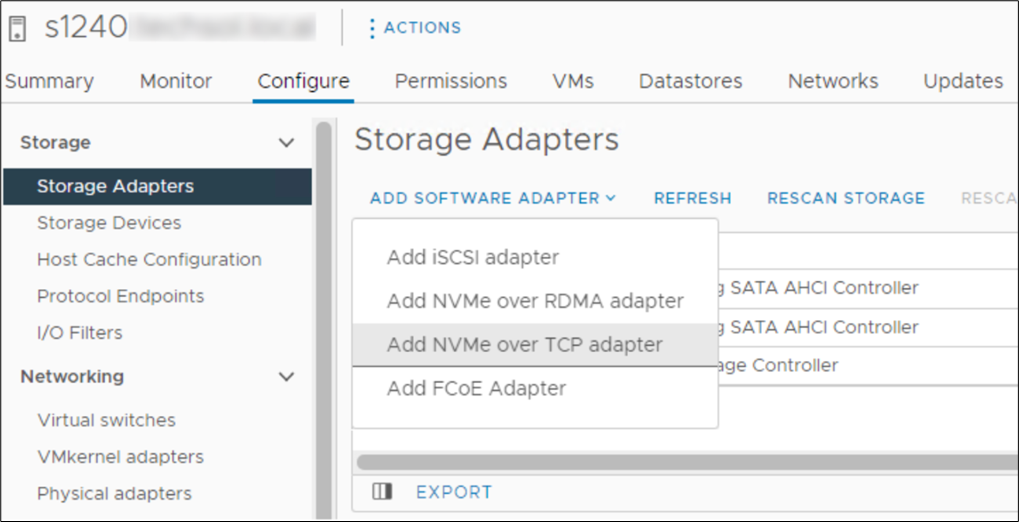 Figure 4. Adding NVMe/TCP adapter in vSphere
Figure 4. Adding NVMe/TCP adapter in vSphere
Conclusion
NVMe/TCP is now a practical alternative to iSCSI and a replacement to older FC infrastructure. With NVMe/TCP's ability to provide higher IOPS at a lower latency while consuming less CPU than iSCSI, and offering similar performance to FC, NVMe/TCP can provide an immediate benefit. In addition, for customers who have cost constraints or skill shortages, moving from FC to NVMe/TCP is a viable choice. Dell SmartFabric Storage Software is the key component that makes scale-out NVMe/TCP infrastructures manageable. SFSS enables an FC-like user experience for NVMe/TCP. Hosts and storage subsystems can automatically discover and register with SFSS so that a user can create zones and zone groups in a familiar FC-like manner. Using Dell PowerEdge MX as the server compute element dramatically simplifies physical networking so customers can more quickly realize NVMe/TCP storage benefits.
References
- SmartFabric Storage Software Deployment Guide
- PowerEdge MX I/O Guide
- SmartFabric Storage Software: Create a Centralized Discovery Controller for NVMe/TCP (video)
- NVMe/TCP Host/Storage Interoperability (E-Lab Support Matrix)
- Dell Technologies Simple Support Matrices (storage E-Lab Support Matrices portal)

Data Protection for PowerStore with PowerProtect DD Series Appliances
Tue, 09 May 2023 23:47:18 -0000
|Read Time: 0 minutes
Summary
Dell PowerStore is a revolutionary storage appliance that is designed for the data era. PowerStore is a data-centric, intelligent, and adaptable infrastructure solution that provides various ways to protect your data, locally and remotely. With PowerStore Manager, you can protect your data locally by creating snapshots (point-in-time copies) of volumes, volume groups, virtual machines, or file systems. You can also apply remote protection by replicating your data to a remote system or by mirroring the data using metro volumes for redundancy in the event of a disaster.
Native integration of Dell PowerProtect DD series appliances with PowerStore
Starting with PowerStoreOS (Operating System) version 3.5, a new remote backup solution is introduced which provides an additional method to protect your data in a PowerStore cluster. Dell PowerProtect DD series appliances can be added as a remote system to protect the resources (volumes and volume groups) on PowerStore. PowerStore can send backups directly to DD series appliances with no backup application required.
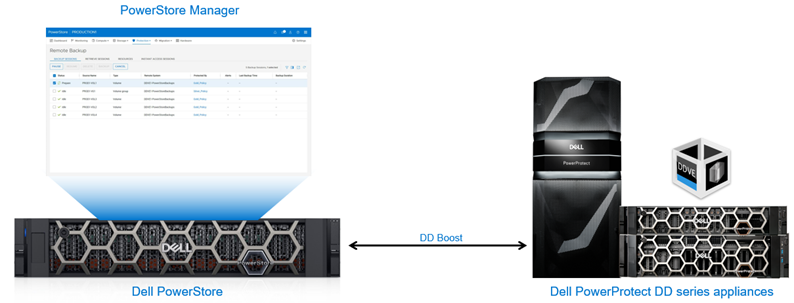
Figure 1. Remote backup – PowerStore to DD series appliances
DD series appliances enable organizations to protect, manage, and recover data at scale across their diverse environments. PowerStore supports backing up to a physical PowerProtect appliance or to PowerProtect DD Virtual Edition (DDVE). DDVE is supported either on-premise or within AWS. A single DD series appliance can be added to the same PowerStore cluster multiple times, provided that a different Storage Unit ID is used. This ability allows you to back up different resources to different locations within a single DD series appliance.
The key features are:
- Self-service remote backup with DD series appliances as the target remote system
- Backup and retrieve PowerStore block volumes and volume groups data with DD series
- Ability to Instantly access the remote snapshot residing on a DD series appliance
- Supports both physical and software-defined DD series appliances. Supports PowerProtect DD Virtual Edition with AWS cloud provider.
- PowerStore leverages DD Boost protocol to send data to DD series
- End to end data protection orchestration using PowerStore Manager
- Direct encrypted transfer from PowerStore to DD series
The key benefits are:
- Zero impact on hosts because backups run directly on PowerStore
- Incremental forever data protection strategy for PowerStore block volumes and volume groups
- Backup different resources to different locations within a single DD series appliance
- Ability to configure local and remote protection within a single protection policy with independent schedule and retention
- Replication between DD series appliances and to the cloud
Steps to protect resources on PowerStore with DD series
Figure 2 below explains the steps to protect resources (volumes and volume groups) on PowerStore with DD series appliances.

Figure 2. Steps to protect resources on PowerStore with DD series
Remote session operations
With PowerStore integration with DD series appliances, you can protect PowerStore volumes and volume groups directly to DD series appliances. With this ability you can perform remote session operations, such as backup, retrieve, and instant access. A remote session tracks each of these operations. Remote backup, retrieve, and instant access sessions go through various states that indicate the session’s progress and any possible issues.
Backup session
PowerStore utilizes backup sessions to create remote backups (snapshots) on the DD series appliances. When a protection policy containing a remote backup rule is assigned to a supported resource, a backup session is created. There is no manual way to configure a backup session without a protection policy. Only one backup rule can be added per protection policy.
A protection policy can be created to provide local and remote protection for PowerStore resources. Each protection policy for the same volume or volume group can include replication rule, remote backup rule, and snapshot rules, which are independent with schedule and retention.
When a backup is run, a snapshot of a volume or a volume group is created on the PowerProtect system. The created snapshots are crash-consistent and there is no application integration. A backup can be started manually by a user or automatically according to the schedule defined in the remote backup rule. Remote snapshots are created with an expiration time based on the remote backup rule associated with the resource.
The snapshots that are created manually by a user inherit the remote backup rule’s retention policy. Only the initial backup is full; subsequent backups are incremental. Backup session states when running a backup include ‘idle’, ‘prepare’, ‘in-progress’, ‘paused’, ‘cancelling’, and ‘failed’. Figure 3 depicts the high-level backup workflow.
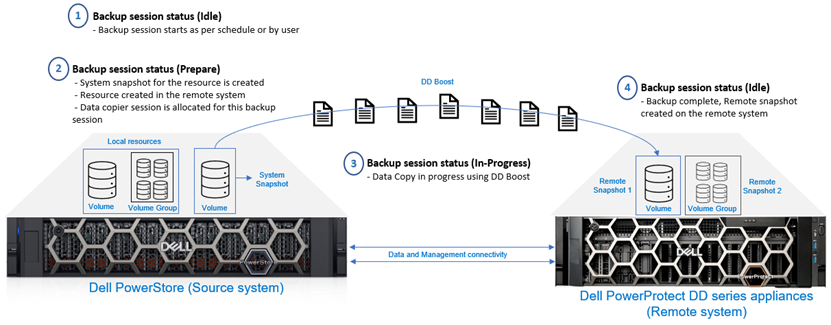
Figure 3. Backup session – High-level workflow
When performing incremental backups, only the unique data is traversed through the network to create a remote snapshot on the DD series appliances. The PowerStore snapshot differential feature, and DD series virtual synthetic operations, enable the implementation of an incremental forever data protection strategy. Only the changed blocks are sent to DD series and aggregated into the full consistent remote snapshot. The snapshot can be retrieved either incrementally or fully to the same PowerStore cluster or different cluster. When the backup is complete, users can view the list of all resources that have been backed up from the Resources page in the PowerStore Manager UI.
Retrieve session
When remote snapshots are created on the DD series appliances, backups can be retrieved to an existing or new PowerStore cluster. The retrieve option is used to copy a remote snapshot for a volume or volume group and save it as a local snapshot in the PowerStore cluster. This local snapshot will be set to no automatic deletion, where the user can update the expiration time or change it to a secure snapshot. Based on the use case, a differential or a full data copy is required. Figure 4 shows the high-level retrieve workflow.
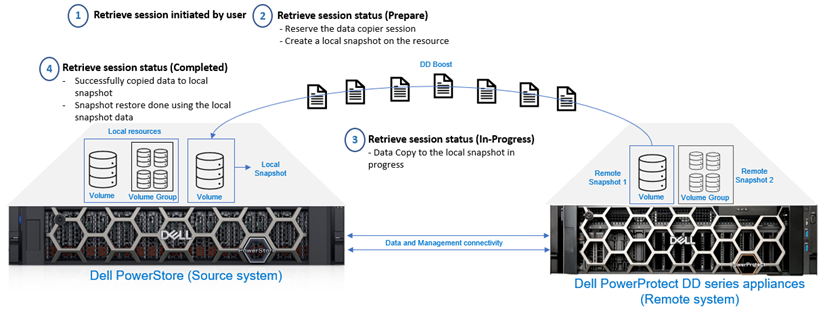
Figure 4. Retrieve session - High-level workflow
You may want to retrieve a remote snapshot for restoring the source resource or for creating a thin clone.
Retrieve a remote snapshot to the same PowerStore cluster:
- If the source volume or volume group of the retrieved backup still exists in the system, a local snapshot is created on the PowerStore cluster under the source resource. If possible, the retrieval is incremental - only the changes from the source volume are retrieved, which makes the retrieval process efficient.
- If the source volume or volume group of the retrieved backup no longer exists in the system, both a new resource and a local snapshot are created, and the new resource is restored with the snapshot data.
Retrieve a remote snapshot to a different PowerStore cluster:
- Because the source volume or volume group never existed on that cluster, both a new resource and a local snapshot are created. The new resource is restored with the snapshot data, returning the resource to the same state as the original.
Instant Access session
An instant access session allows a host to access a volume or volume group remote snapshot residing on a DD series appliance. From PowerStore Manager, you can create an instant access session to view the remote snapshot contents without having to retrieve them on the PowerStore cluster. Instant Access enables users to instantly access deleted, corrupted, or modified data within the remote snapshot. Only one instant access session is allowed per remote snapshot. When an instant access session is running, the PowerStore appliance does not perform backup and retrieve operations, and local resources are not protected until the instant access sessions are ended. Figure 5 shows the high-level instant access session workflow.
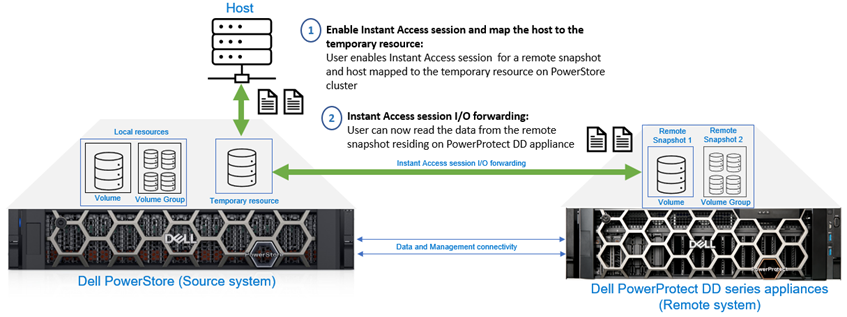
Figure 5. Instant Access session - High-level workflow
When enabling Instant Access for a volume snapshot, you can configure host access before enabling the session. For an instant access session on a volume group snapshot, the user must add the host access to the remote snapshot volumes after the session is created.
Note: Instant Access is supported for all block resources except VMware VMFS datastores. If access to data within a remote snapshot of a VMFS datastore is required, customers can still perform a retrieve operation on the remote snapshot and create and mount a thin clone.
Data protection is a mission-critical priority for any modernized technology, as organizations increasingly rely on innovative storage technology appliances such as PowerStore. This unique data protection solution, which integrates PowerStore with DD series appliances, ensures continuous availability of data in PowerStore to help organizations meet their SLAs.
References
Dell PowerStore:
- Dell PowerStore – Product website
- Dell PowerStore: Snapshots and Thin Clones
- Dell PowerStore: Info Hub
Dell PowerProtect DD series appliances:
- PowerProtect DD Series Appliances – Product website
- PowerProtect DD Series Appliances - Data Sheet
- PowerProtect DD Series Appliances - Spec Sheet
- Dell PowerProtect DD Series Appliances - Info Hub





